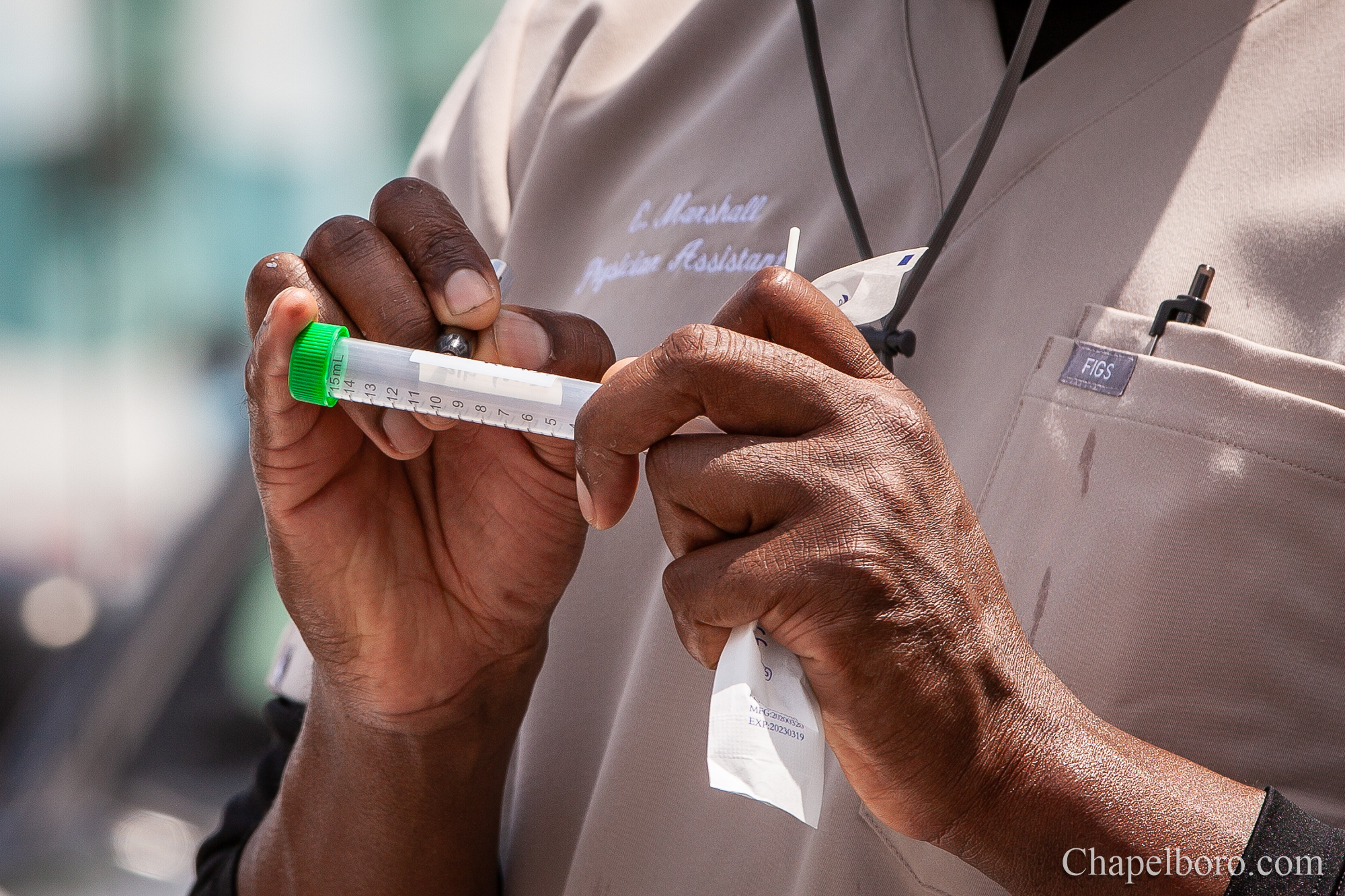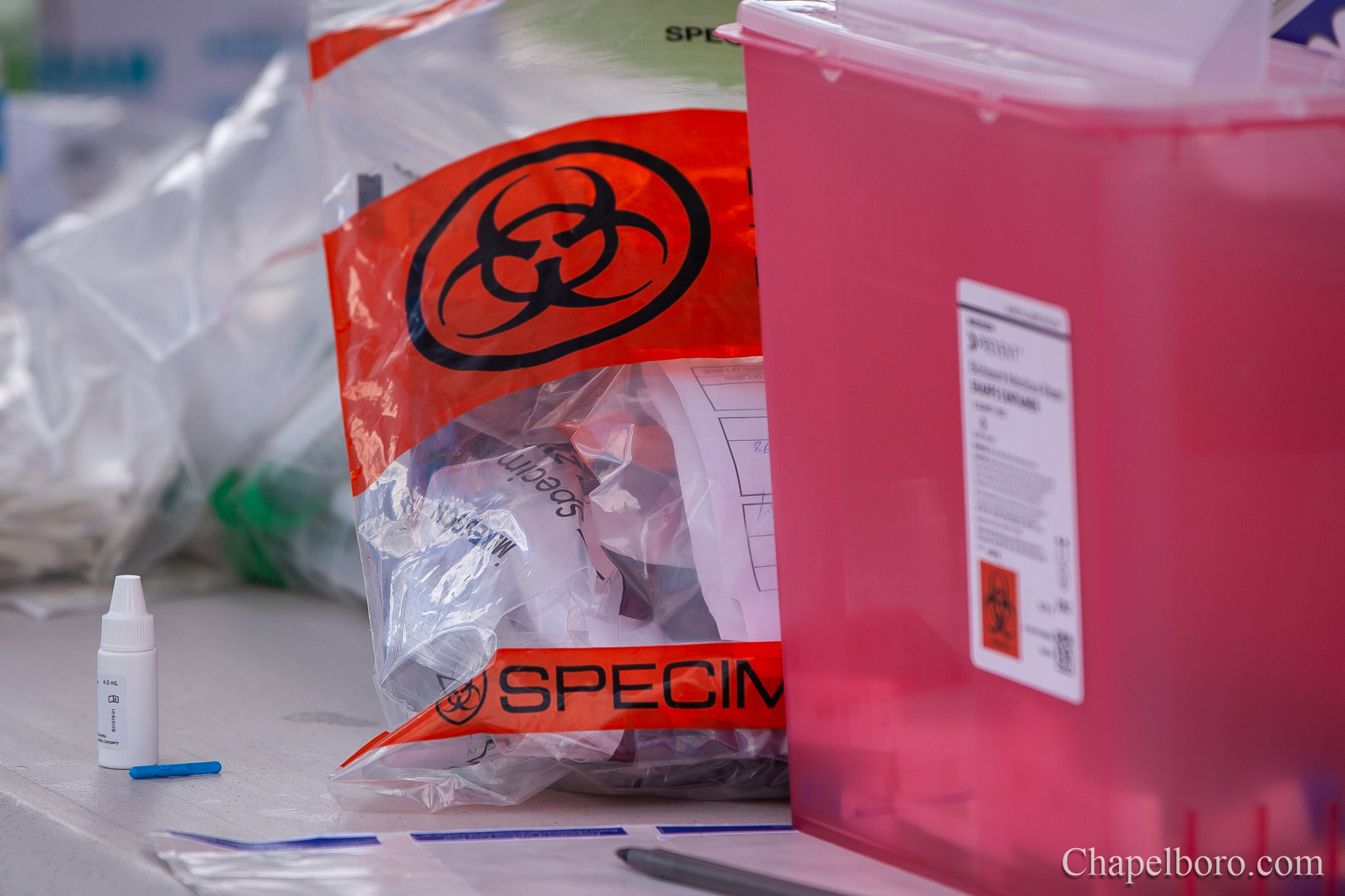COVID-19 numbers have come down sharply after the omicron wave in January and February, leading cities, states, schools, and other organizations to lift mask mandates and other restrictions nationwide. Orange County is no exception: the county is still under a state of emergency until April 30, but other mandates have been lifted and fewer folks are masking up when they’re out.
But the COVID pandemic isn’t over yet – and health officials are closely watching BA.2, a new version of the Omicron variant, which is quickly taking over as the dominant strain. BA.2 is no more vaccine-resistant than previous strains and it doesn’t cause more severe disease – but it is more transmissible than the original (BA.1) version of Omicron, and it’s already caused a significant uptick in cases in some parts of the U.S.
Should we be worried, and what should we do?
97.9 The Hill’s Aaron Keck recently spoke with Orange County Health Director Quintana Stewart – who says she remains optimistic and more relaxed, even though she does expect an uptick in COVID-19 cases.
Listen to their conversation:
AARON KECK: So what should folks know now about what we’re seeing out there?
QUINTANA STEWART: So, unfortunately, COVID is still here with us. However, I will say, I think we are in a much better place today than we were even just a few months ago, [in] late December or early January. We still have COVID cases in our community; however, what we are seeing is [that] disease severity is not as bad. We’re not seeing as bad of an impact on the hospital system. Here in Orange County, we’re not seeing a huge number of deaths like we once saw during the pandemic. So I feel like we have figured some things out. We’re maintaining and we’re doing okay; however, COVID is still here with us, so we still have to practice some of our other mitigation strategies when needed.
KECK: What should folks know about the BA.2 variant, this new one?
STEWART: We are starting to see an uptick in BA.2 cases; right now it’s making up, I think, about half of the new cases that we’re seeing here in the county. However, we are not seeing any worse disease severity. It looks like the immunizations are working. So if you got your COVID vaccination, [and] you continue to mask when you’re in large crowds with unknown people that don’t know their status of COVID or vaccination – those things still work.
KECK: Do you expect to see an uptick in the [overall] number of cases?
STEWART: Well, looking at some of the surveillance, things that we’re now watching, for example, [COVID particles in] wastewater, we are seeing a small uptick. I think that is expected: we’re at that time of year, spring, you know, spring break for the schools and university.
KECK: And 40,000 people gathering on Franklin Street for some reason or other.
STEWART: Imagine that! So, yeah, we’re seeing a small uptick, but again, we’re not seeing more severe illness and death from it.
KECK: In the context of that: as case numbers are coming down, mask mandates are lifting [and] rules are changing, and there might be some confusion or uncertainty about what to do when. So when do you wear a mask?
STEWART: I just came off of a trip. TSA [and] federal rules still require masking in the public transportation setting, so absolutely, when I was on a plane, I had my mask on. In the airport I had my mask on. For me right now, because I’m up to date on my COVID vaccination, I tend to only mask when I’m out in public in a large setting, where I don’t know who I’m around and I don’t know their current status with COVID.
KECK: Like grocery stores, malls, things like that?
STEWART: Yeah. But otherwise I’m relaxing and I’m not wearing the mask. In certain parts of my department, I still have to wear a mask because we’re a healthcare setting. But yeah, just everyday in the office at work, I’m going without it.
KECK: Orange County is still technically under a state of emergency until the end of the month. Do you anticipate the state of emergency being lifted at the end of the month? Earlier than that? Later than that?
STEWART: I don’t anticipate any change with the current plans – but again, that’s the decision of our elected officials.
KECK: So lifting [the state of emergency] at the end of the month then?
STEWART: Correct.
KECK: The other thing that developed – and this is not an Orange County thing, it’s a UNC thing – UNC had its own [COVID-19 dashboard,] but they took theirs down earlier this week. Thoughts about that?
STEWART: We had some conversation with the university, they were planning to do that. What I think we’re all doing – because there’s so much data available between what we’ve locally posted, what the NCDHHS site posts, [and] what the CDC posts, it can really get confusing quickly for community members — so we’ve all opted to really turn towards and look at the newly revised DHHS state dashboard site.
As of March 23rd, they have certain metrics that they’re watching. It’s more of a surveillance. So they’re looking at the wastewater surveillance, and we have a site here in the Chapel Hill-Carrboro area from OWASA. They’re looking at COVID-like illness in the ED departments, hospital admissions — and [they’re] still looking at COVID cases, although we know that number may not be 100 percent accurate because we have so much availability of at home tests. [They’re] looking at our booster rates, the prevalence of the variant, and they’re looking at the CDC COVID-19 community level. So we are all turning and looking at the state site. They update the site now once a week on Wednesdays. That just allows us to do more of the surveillance and watch for trends. And so that’s the site that many of us are turning to, to stay up with our COVID data.
KECK: Turning to vaccinations. The advice is still to get vaccinated, get boosted — [but] different people are in different situations now. Some people are double vaccinated. Some people have the booster. I got my booster in October, I think, so it’s been about six months. I’m a certain age. Other people who are different ages will have different [situations.] What should folks know about where things stand right now?
STEWART: Lots of moving parts when it comes to vaccination and the boosters. So you’re right. Number one, if you have not yet been vaccinated or you’ve not completed your primary series, I encourage everyone go and get your vaccination for COVID 19. When it comes to the boosters: anyone 12 and up, they are eligible for a COVID booster, [though] you have to wait at least five months after completing your primary series [two Pfizer or Moderna shots, or one J&J shot.] If you are immunocompromised, age 12 and up, then it is advised that you get your booster shot at least three months after that [last] dose. [And] FDA/CDC just announced recently that there are some members of the population that are now eligible for a second booster. That would be folks that are 50 years of age and up. It has to be one of the MRNA vaccines, so Pfizer or Moderna – and it’s suggested that they get that at least four months after their first booster.
KECK: I’m kind of still operating on the assumption that long term we’re going to end up at a point, just like the flu shot, where you just get [the COVID shot] every year. Is that fair?
STEWART: That’s a fair assumption to make. FDA, CDC, they’re still meeting and talking about all this stuff – but that’s a real possibility that could be our reality, like you said, similar to [the flu shot,] just get some annual protection.
KECK: The day that the pandemic is over for me is the day that the over-the-counter COVID medicine finally shows up. Like, alongside the Nyquil and the Sudafed and everything else.
STEWART: Yes.
KECK: Kids under five still can’t get the vaccine. What’s the status on that?
STEWART: Correct. So we had a call with the state [last] week and it is their thought, we believe, that maybe Pfizer and Moderna will submit their request for this emergency use authorization [in] early May. So for the kids – you know, six months through five [years] — it’s expected that maybe the request will go out in early May for them to get approval.
KECK: And what’s the timeline on approval after the request goes out?
STEWART: They’ve usually been turned out around within seven to 14 days. So, within a two- week period, if it [even] takes that long. I know there’s been lots of study and research around this, so it may happen even faster. But I will tell you: as soon as it is approved and we get standing orders updated, we’ll make it available.
Chapelboro.com does not charge subscription fees, and you can directly support our efforts in local journalism here. Want more of what you see on Chapelboro? Let us bring free local news and community information to you by signing up for our biweekly newsletter.










